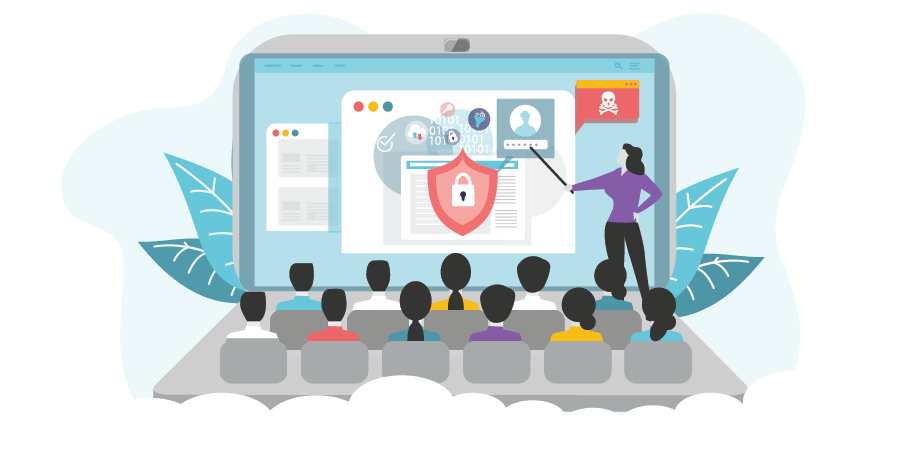
Trust issues in the digital landscape
Home » Security » Trust issues in the digital landscape
In the age of digitalisation and technological advancement, the fight against cybercrime has become a challenge of unprecedented magnitude. With every click of the mouse, we face doubts we never experienced before. Is this e-mail real? Am I actually communicating with my colleague? Does this website look trustworthy? The questionnaire is steadily filling up.
The biggest hurdle in this battle currently lies with the quality of Phishing attacks. Fake websites look increasingly professional and fake e-mails are hardly distinguishable from genuine communication. This forces organisations to make extra efforts in their digital communication in order not to jeopardise the trust of their customers and partners.
For example, I personally think more than twice when I want to log in to an online government service. I often catch myself questioning everything if the layout looks a little strange here and there. Whether that is a good or bad reflex, I will let it rest.
The evolution of cybercrime
The world of cybercrime has undergone an extraordinary evolution. What once began as simple, uncoordinated attacks has evolved into a sophisticated game of cat and mouse between hackers and cybersecurity professionals. Phishing attacks, in which malicious actors pose as trusted entities to extract personal information, have become one of the most far-reaching tactics in this regard.
We are also seeing the rise of “spear phishing”, a more targeted form of phishing in which attackers specifically target individuals or organisations. They often use personal information to make their attacks more credible. This makes it all the more important to know how to recognise and avoid these attacks.
Noteworthy. No crazy code, then, as they like to visualise it in the movies. But just a cunning way of gaining people’s trust. Sprinkle in some emotion and urgency, and the bait is ready. It remains an ugly psychological game.
Want to learn more about Phishing attacks? Discover an overview of different types of Phishing: https://safe-connect.com/an-overview-of-different-types-of-phishing/
The rise of sophisticated Phishing attacks
As mentioned earlier, fake websites and e-mails today are barely distinguishable from the real thing. Cybercriminals have refined their tactics and managed to create enormous credibility. The advent of ChatGPT and other AI tools is simplifying this process. There are even criminal organisations like Lockbit conquering the Ransomware market. This makes it extremely difficult for individuals and organisations to judge the sincerity of online interactions.
This underlines the importance of continuous investment in cybersecurity measures. Besides using advanced technologies, it is also crucial to create a culture of cybersecurity within organisations. This starts with employee awareness and training.

The consequences for trust
The growing problem of phishing attacks has a direct impact on trust in the digital world. People and organisations have to be constantly on their guard, wondering whether the information received can be trusted. This leads to hesitation and reluctance in online interactions, which affects the efficiency and effectiveness of digital communication.
This can result in significant costs and reputational damage for companies that fall victim to successful phishing attacks. It highlights the importance of proactive measures and investments in cybersecurity.
The necessity of Cybersecurity Awareness Training
To address this trust crisis, Cybersecurity Awareness Training is essential. Individuals and organisations should be aware of the latest phishing techniques and be able to recognise them. This requires an ongoing investment in digital literacy and a proactive attitude towards online security.
Moreover, it is important to stress that this is not only a responsibility of IT departments, but of all employees in an organisation. Everyone plays a role in protecting sensitive information and preventing potentially dangerous situations. Only when everyone is on the same page will you minimise the number of cyber attacks due to human error.

Technological innovations in the fight against Cybercrime
Fortunately, we are not powerless in this struggle. Technological innovations in cybersecurity are constantly being developed and implemented. From advanced firewalls to machine learning algorithms that can detect suspicious activity. At Safe-Connect, we use advanced Fortinet Firewalls and high-performance cybersecurity with Microsoft Azure.
Collaboration as the key to success
But the fight against cybercrime is not fought alone. Cooperation between governments, companies and individuals is essential to create an effective defence. Sharing information and best practices, setting up alert systems and jointly developing security solutions are crucial steps in the right direction. We would be happy to help your organisation with that.
Restoring trust
The fight against cybercrime is a shared responsibility that affects us all. Through awareness, training and technological innovation, we can restore trust in the digital age. Collaboration is the key to success, and with joint efforts we can create a safer and more trustworthy digital world for all.
Talk to a specialist today to take your cybersecurity to the next level!
Schedule your consultation